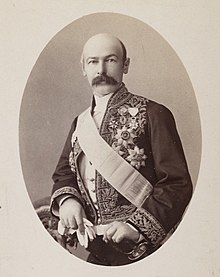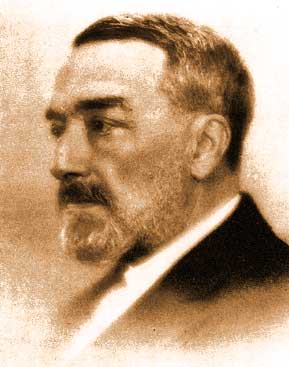
Salomon Reinach was a French archaeologist, religious historian and was a major figure in the Franco-Jewish establishment in the late nineteenth and early twentieth centuries. He was vice president of the most important contemporary Jewish organization, the Alliance Israelite Universelle, and a founder of the Jewish Colonization Association.

Jean Antoine Letronne was a French archaeologist.
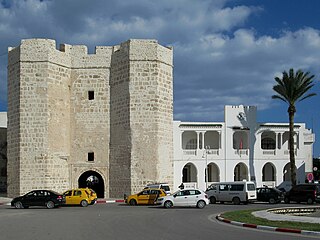
Mahdia is a Tunisian coastal city with 62,189 inhabitants, south of Monastir and southeast of Sousse.
Louis Charles Dezobry was a 19th-century French historian and historical novelist, born at St-Denis.
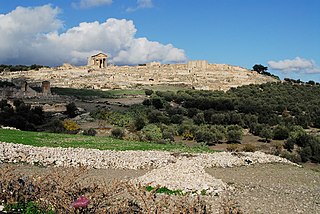
Dougga or Thugga or TBGG was a Berber, Punic and Roman settlement near present-day Téboursouk in northern Tunisia. The current archaeological site covers 65 hectares. UNESCO qualified Dougga as a World Heritage Site in 1997, believing that it represents "the best-preserved Roman small town in North Africa". The site, which lies in the middle of the countryside, has been protected from the encroachment of modern urbanization, in contrast, for example, to Carthage, which has been pillaged and rebuilt on numerous occasions. Dougga's size, its well-preserved monuments and its rich Numidian-Berber, Punic, ancient Roman, and Byzantine history make it exceptional. Amongst the most famous monuments at the site are a Libyco-Punic Mausoleum, the Capitol, the Roman theatre, and the temples of Saturn and of Juno Caelestis.

Mahdia Governorate is in central-eastern Tunisia, named after its largest town and administrative centre. It comprises an area of coastal relative lowland, but extends further inland than its coastal length. It is one of the twenty-four governorates (provinces). It covers an area of 2,966 km², and has a population of 410,812. Four other governorates are its neighbours - clockwise from south, Sfax, Kairouan, Sousse and Monastir Governorates.

Almost all Roman roads in Africa were built in the first two centuries AD. In 14 AD, Legio III Augusta completed a road from Tacape to Ammaedara: the first Roman road in Africa. In 42 AD, the kingdom of Mauretania was annexed by Rome. Emperor Claudius then restored and widened a Carthaginian trail and extended it west and east. This way the Romans created a continuous coastal highway stretching for 2,100 miles from the Atlantic to the Nile. In 137, Hadrian built the Via Hadriana in the eastern desert of Egypt. It ran from Antinoopolis to Berenice.
Alfred Daviel was a French lawyer and politician who was appointed Minister of Justice in the last cabinet of the French Second Republic.

The Libyco-Punic Mausoleum of Dougga is an ancient mausoleum located in Dougga, Tunisia. It is one of three examples of the royal architecture of Numidia, which is in a good state of preservation and dates to the second century BC. It was restored by the government of French Tunisia between 1908 and 1910.

Simminensis is an ancient and titular episcopal see of the Roman province of Africa Proconsularis in modern Tunisia, and a suffragan diocese of the Archdiocese of Carthage.

Louis Vivien, called Vivien de Saint-Martin, was a 19th-century French geographer.

René Cagnat was a French historian, a specialist of Latin epigraphy and history of North Africa during Antiquity.
Yvon Thébert was a 20th-century French archaeologist and historian of marxist inspiration.
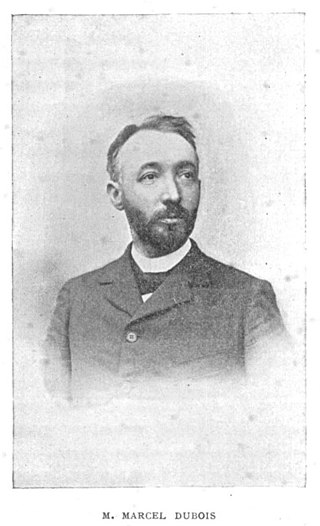
Marcel Dubois was a French geographer. He was a co-founder of the Annales de Géographie, a journal of academic geography.
Naïdé Ferchiou was a Tunisian archaeologist whose work dealt mainly with Roman North Africa. She excavated at several important sites, including Abthugni.

Taïeb Louhichi was a Tunisian film director, screenwriter, producer and filmmaker. His best known works include his debut feature film, Shadow of the Earth (1982), Layla, My Reason (1989), and La Danse Du Vent (2004).
Alexandre Lézine was a French architect, historian and archaeologist of Russian origin.
Leïla Ladjimi-Sebaï is a historian, archaeologist and epigrapher, writer and poet from Tunisia. She is a specialist in the history of Roman-era women in North Africa and the history of Carthage.

Joseph Déchelette was a French archaeologist, prehistorian, and museum curator. He particularly distinguished himself as an early scholar of ancient ceramology. He is among the first to have made the connection between the La Tène culture and the Celtic civilisation. He authored an important work covering the full range of the prehistory of France, Le Manuel d’archéologie préhistorique, celtique et gallo-romaine (1908–14).
The Abanni were an ancient tribe in the northwest of Africa.
